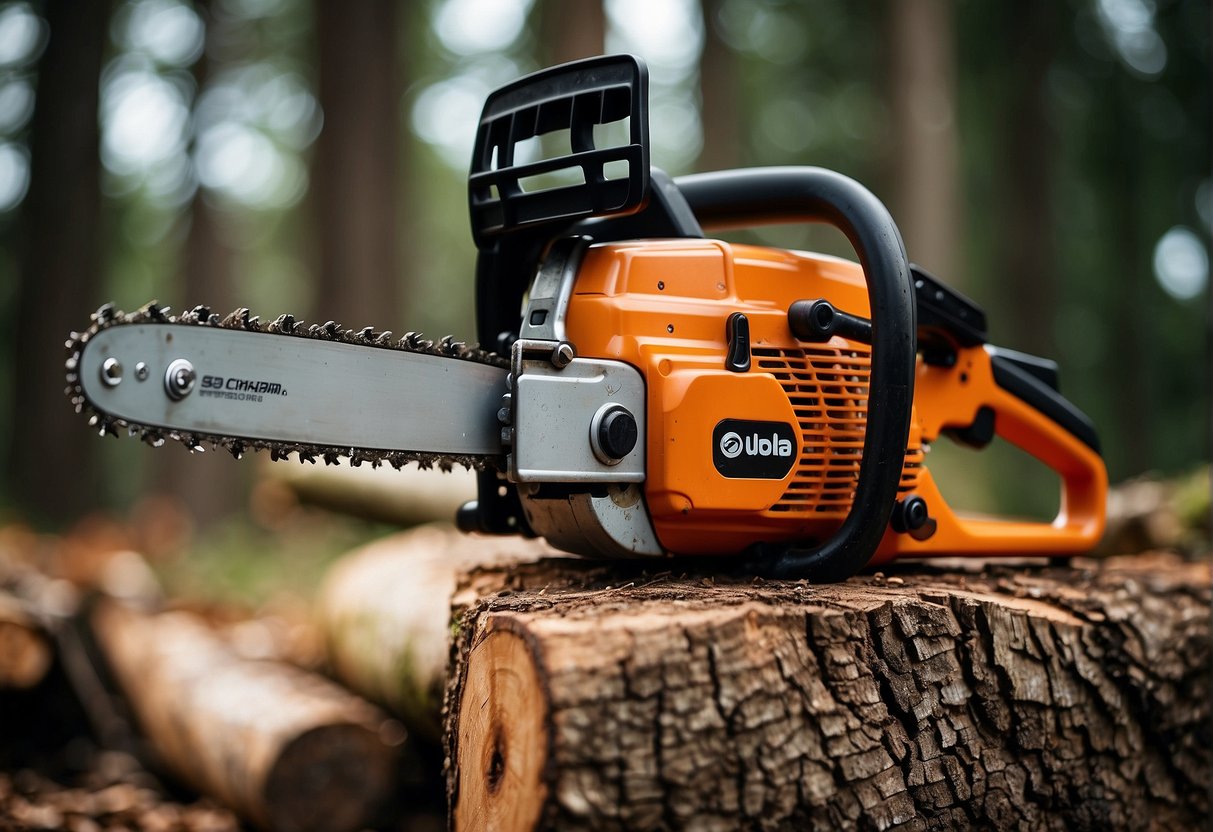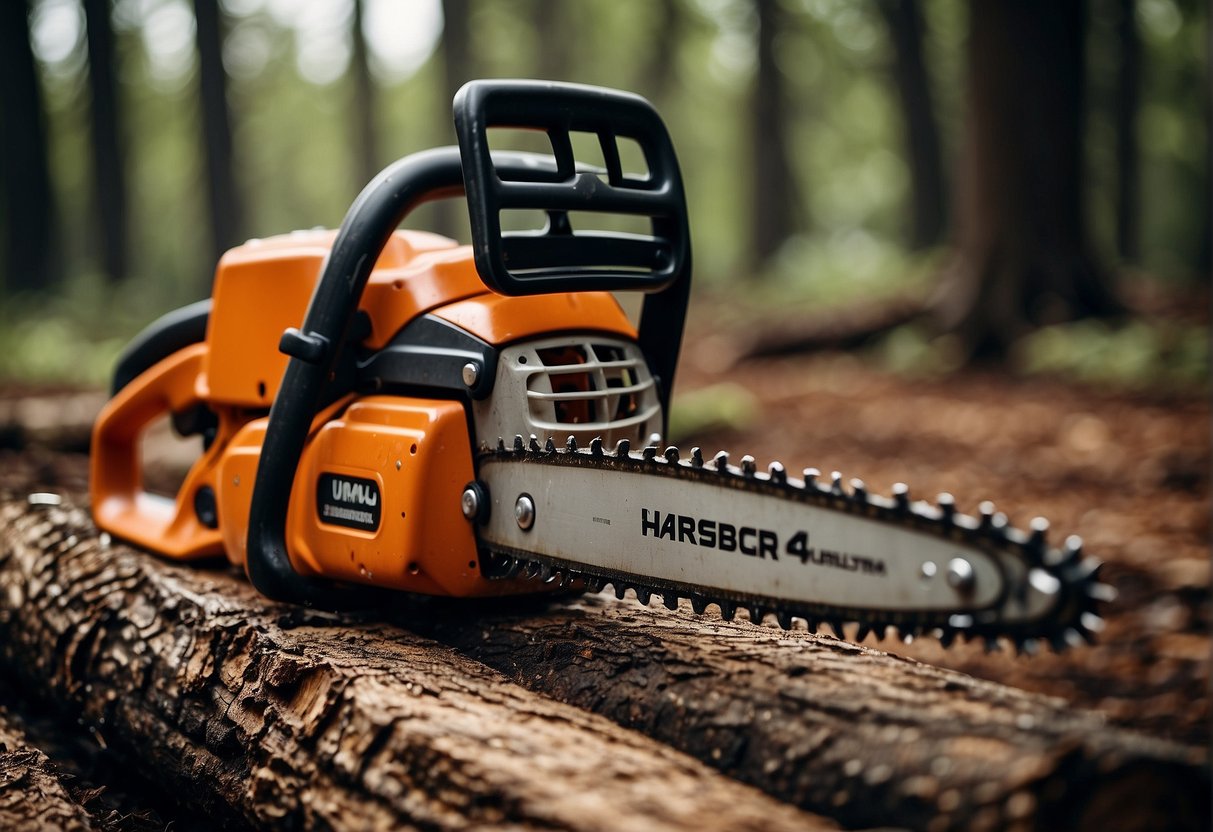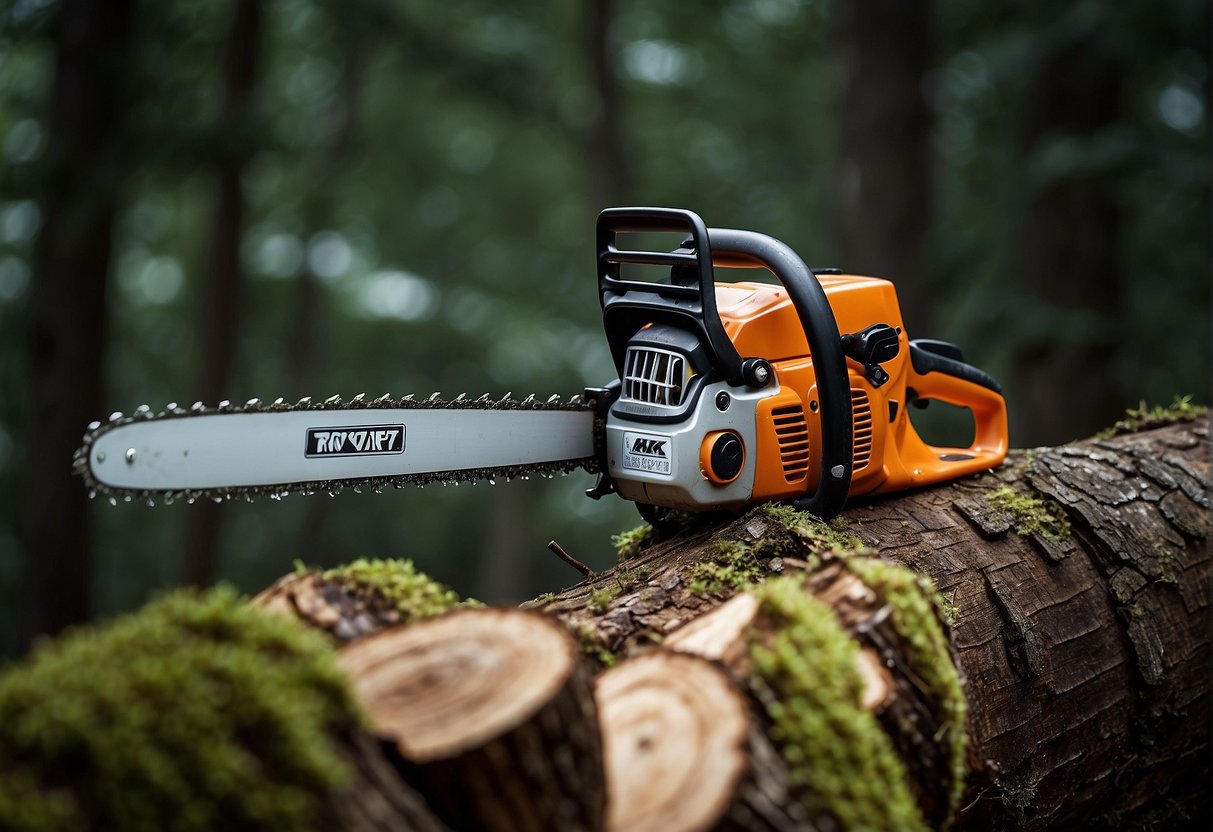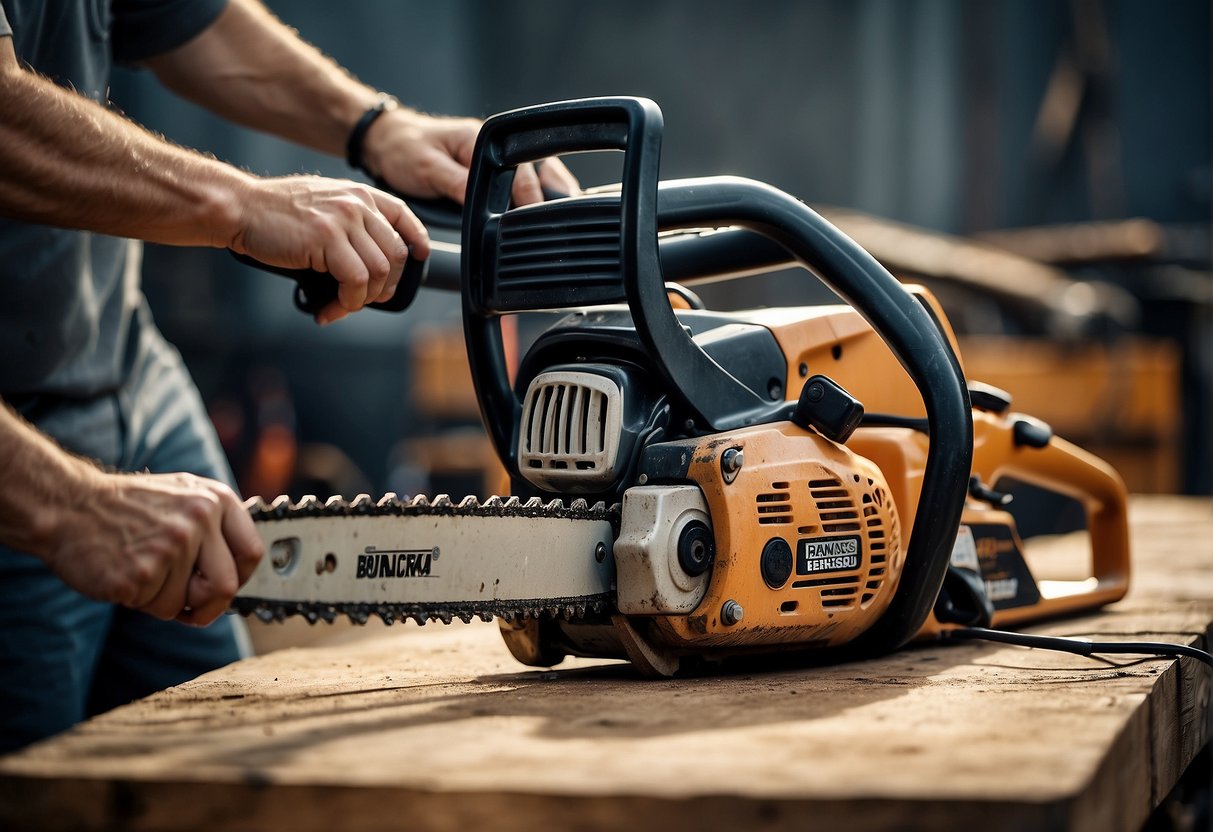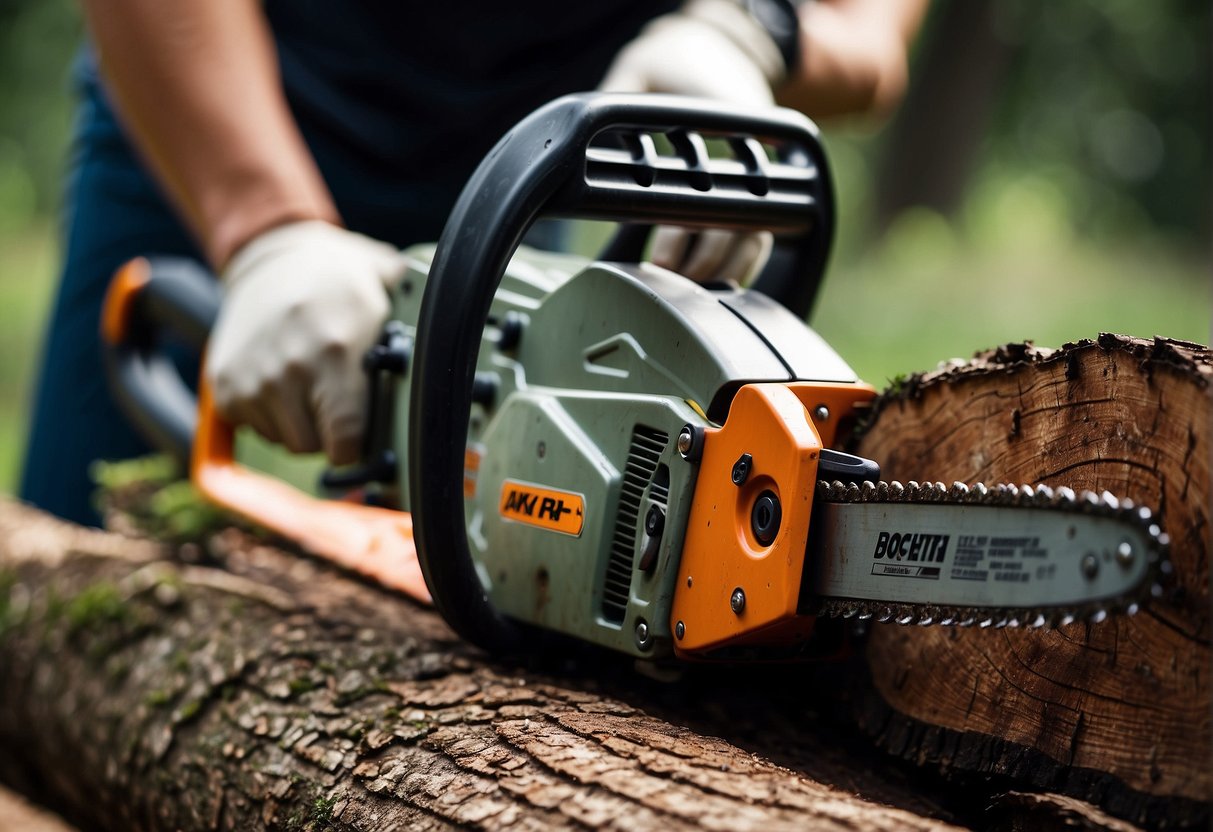I have researched the topic of putting a smaller bar on a chainsaw and have found some useful information. If you’re wondering whether it’s possible to put a smaller bar on your chainsaw, the answer is yes, but with some limitations. It’s important to understand the compatibility and specifications of your chainsaw model before making any modifications.
Chainsaw bars are evaluated from the edge of the bar to the heel and can range in length from 10 to 40 inches. While most chainsaws can handle three distinct bar sizes, using too small of a bar may cause the engine to overwork and damage the chain or other parts. However, a smaller bar can reduce the weight and increase maneuverability of your saw, making it easier to handle in tight spaces.
It’s important to consider the benefits of a smaller bar before making any modifications to your chainsaw. A smaller bar can offer increased maneuverability and reduced weight, making it easier to handle in tight spaces. However, it’s important to ensure that the bar is compatible with your saw and that its length is appropriate for the power of your chainsaw. With proper installation and maintenance, a smaller bar can be a useful modification to your chainsaw.
Key Takeaways
- Chainsaw bars can range in length from 10 to 40 inches, but using too small of a bar may cause damage to your chainsaw.
- A smaller bar can offer increased maneuverability and reduced weight, but it’s important to ensure compatibility with your chainsaw and appropriate length.
- Proper installation and maintenance are key to ensuring the safe and effective use of a smaller bar on your chainsaw.
Understanding Chainsaw Bars
Chainsaw Bar Basics
As a chainsaw owner, it is essential to understand the basic components of the chainsaw, including the chainsaw bar. The chainsaw bar, also known as the guide bar, is the long, flat, and narrow metal piece that holds the chain in place and guides it during cutting. The chainsaw bar is an essential part of the chainsaw, and it is crucial to choose the right size and type of bar for the job.
Bar Length and Its Impact on Cutting
One of the critical factors to consider when selecting a chainsaw bar is its length. Chainsaw bars come in different sizes, ranging from 12 inches to 36 inches, with the most common sizes being 16, 18, and 20 inches. The length of the chainsaw bar determines the size of the wood that the chainsaw can cut. A longer bar can cut larger wood, while a shorter bar is suitable for smaller wood.
However, it is important to note that using a bar that is too long for your chainsaw can cause the engine to overwork, leading to damage to the chain or other parts. On the other hand, using a bar that is too short can cause damage to the chain, clutch, sprocket, or other components. Therefore, it is crucial to choose the right size of chainsaw bar that is compatible with your chainsaw’s engine power and specifications.
In summary, understanding the basics of the chainsaw bar is essential for any chainsaw owner. The bar length is a critical factor to consider when selecting a chainsaw bar, and it is crucial to choose the right size that is compatible with your chainsaw’s engine power and specifications. By doing so, you can ensure that your chainsaw operates efficiently and safely.
Compatibility and Specifications
Matching Bar to Chainsaw
When considering whether to put a smaller bar on your chainsaw, it is important to ensure that the bar is compatible with your saw. Not all chainsaws are designed to accommodate different bar sizes, so it is important to check the manufacturer’s guidelines before making any changes.
One way to determine whether a particular bar is compatible with your chainsaw is to match the specifications of the bar to those of your saw. This includes the length of the bar, the pitch of the chain, and the gauge of the chain. The pitch of the chain refers to the distance between two consecutive rivets, while the gauge refers to the thickness of the drive links.
Manufacturer’s Guidelines
It is important to follow the manufacturer’s guidelines when choosing a bar for your chainsaw. The guidelines will provide information on the maximum and minimum bar lengths that are compatible with your saw, as well as the recommended pitch and gauge of the chain.
It is also important to note that using a bar that is too small for your chainsaw can cause damage to the chain, clutch, sprocket, or other components. Conversely, using a bar that is too large for your chainsaw can cause the engine to overwork, leading to decreased efficiency and potentially causing damage to the engine.
In summary, when considering whether to put a smaller bar on your chainsaw, it is important to match the specifications of the bar to those of your saw and to follow the manufacturer’s guidelines. By doing so, you can ensure that your chainsaw operates efficiently and safely.
Benefits of a Smaller Bar
As a chainsaw user, I have found that using a smaller bar can have several benefits. In this section, I will discuss some of these benefits in detail.
Improved Control and Maneuverability
One of the most significant advantages of using a smaller bar on your chainsaw is that it improves your control and maneuverability. A smaller bar reduces the weight of the chainsaw, making it easier to handle in tight spaces. This can be especially useful when working in confined areas, such as when pruning trees or cutting small branches.
Furthermore, a smaller bar allows for more precision cutting, which is essential when working on delicate projects. The reduced weight of the chainsaw also means that you can work for longer periods without experiencing fatigue.
Reduced Fatigue and Easier Handling
Another benefit of using a smaller bar on your chainsaw is that it reduces fatigue and makes the tool easier to handle. A smaller bar means that the chainsaw is lighter, which reduces the strain on your arms and shoulders. This can be especially useful when working on larger projects that require extended periods of use.
Additionally, a smaller bar can make the chainsaw easier to handle, especially for those who are not accustomed to using these tools. The reduced weight of the chainsaw and improved control can make it easier to make precise cuts, which can be especially useful when working on intricate projects.
In conclusion, using a smaller bar on your chainsaw can have several benefits, including improved control and maneuverability, reduced fatigue, and easier handling. However, it is crucial to consult the manufacturer’s guidelines before changing out your chainsaw bar size to ensure that you do not damage the chain or other parts.
Installation and Maintenance
Replacing Your Chainsaw Bar
When it comes to replacing your chainsaw bar, it’s important to choose the right size and type of bar for your chainsaw. Before purchasing a new bar, check your chainsaw’s manual to see what size and type of bar is recommended. Once you have the right bar, follow these steps to replace it:
-
Remove the old bar and chain: To remove the old bar and chain, loosen the chain tension and remove the bar nuts. Slide the bar and chain off the saw.
-
Install the new bar: Slide the new bar onto the saw and align it with the bar nuts. Tighten the nuts until they are snug.
-
Install the chain: Install the chain onto the bar and make sure it’s properly tensioned. Check your chainsaw manual for the proper tensioning procedure.
-
Test the saw: Before using the saw, test it to make sure it’s working properly. Check the chain tension and make sure the bar is properly lubricated.
Regular Chainsaw Maintenance
Regular maintenance is key to keeping your chainsaw running smoothly. Here are a few tips for maintaining your chainsaw:
-
Clean your chainsaw regularly: After each use, clean the saw to remove any debris or sawdust. Use a brush or compressed air to clean the saw.
-
Lubricate the bar and chain: Proper lubrication is important for keeping the bar and chain moving smoothly. Make sure to use the right type of oil for your saw and keep the oil reservoir topped off.
-
Check the chain tension: Check the chain tension regularly and adjust it as needed. A loose chain can cause damage to the bar and chain, while a tight chain can put strain on the engine.
-
Check for damage: Before using the saw, check for any damage to the bar, chain, or other components. If you notice any damage, replace the damaged part before using the saw.
By following these simple steps, you can ensure that your chainsaw is running smoothly and safely. Regular maintenance and proper installation of replacement parts can help extend the life of your chainsaw and keep it working at its best.
Safety and Best Practices
When using a chainsaw, safety should always be the top priority. Here are some best practices to follow when handling a chainsaw.
Proper Chainsaw Handling
It is crucial to handle a chainsaw properly to avoid accidents and injuries. Always maintain a firm grip on the chainsaw with both hands, and never operate it with one hand. Keep the chainsaw close to your body and maintain a stable stance while cutting. Avoid cutting above shoulder height or below waist height to maintain control of the chainsaw.
Protective Equipment and Precautions
Protective equipment is essential when operating a chainsaw. Always wear a hard hat, safety glasses, and hearing protection. Gloves and chaps can also protect you from cuts and debris. Make sure that your clothing is close-fitting and does not have any loose ends that could get caught in the chainsaw.
Before starting the chainsaw, check the chain tension and make sure that the safety chain is engaged. Always start the chainsaw on the ground, and never try to start it while holding it in the air.
In addition to these best practices, it is important to be aware of the kickback potential of a chainsaw. Kickback occurs when the chainsaw’s bar tip comes into contact with an object, causing the chainsaw to jerk back towards the operator. To avoid kickback, always keep the bar tip away from any objects and be mindful of the chainsaw’s position while cutting.
By following these best practices and taking the necessary precautions, you can safely operate a chainsaw and potentially avoid accidents and injuries.
Frequently Asked Questions
What factors should be considered when downsizing a chainsaw bar?
When considering downsizing a chainsaw bar, it’s essential to ensure that the new bar is compatible with your chainsaw. You should also consider the power of your chainsaw, the type of wood you’ll be cutting, and the length of the new bar.
How does bar length affect chainsaw performance?
The length of a chainsaw bar affects its performance. A longer bar can cut through thicker wood, but it also requires more power from the chainsaw. A shorter bar is easier to maneuver and requires less power, but it can’t cut through as thick of wood.
Are there any risks to using a shorter bar on my chainsaw?
Using a shorter bar on your chainsaw can reduce the weight and increase maneuverability, but it can also cause damage to the chain, clutch, sprocket, or other components if the bar is too short. You should ensure that the new bar is compatible with your chainsaw and that its length is appropriate for the power of your chainsaw.
What is the process for safely fitting a smaller bar on a chainsaw?
To safely fit a smaller bar on your chainsaw, you should first remove the old bar and chain. Then, you should install the new bar and chain, ensuring that they are compatible with your chainsaw. Finally, you should adjust the tension of the chain to ensure it is tight enough to prevent slipping but not too tight that it binds.
How do I determine the appropriate chain size for a new, shorter bar?
To determine the appropriate chain size for a new, shorter bar, you should refer to your chainsaw’s manual. The manual should provide information on the recommended chain size for each bar length. You can also consult a professional for advice.
Can using a shorter bar on my chainsaw improve maneuverability for certain tasks?
Using a shorter bar on your chainsaw can improve maneuverability for certain tasks, such as pruning or cutting smaller trees. However, it may not be suitable for larger jobs that require a longer bar. It’s essential to consider the type of wood you’ll be cutting and the power of your chainsaw when deciding on the appropriate bar length.

Hi, I’m Sal Muller of Tooltrip.com. My DIY experience led me to understand essential power tools for home projects. Tooltrip.com guides enthusiasts and professionals in choosing right tools for any job. I provide concise top tool reviews for easier, efficient DIY.

